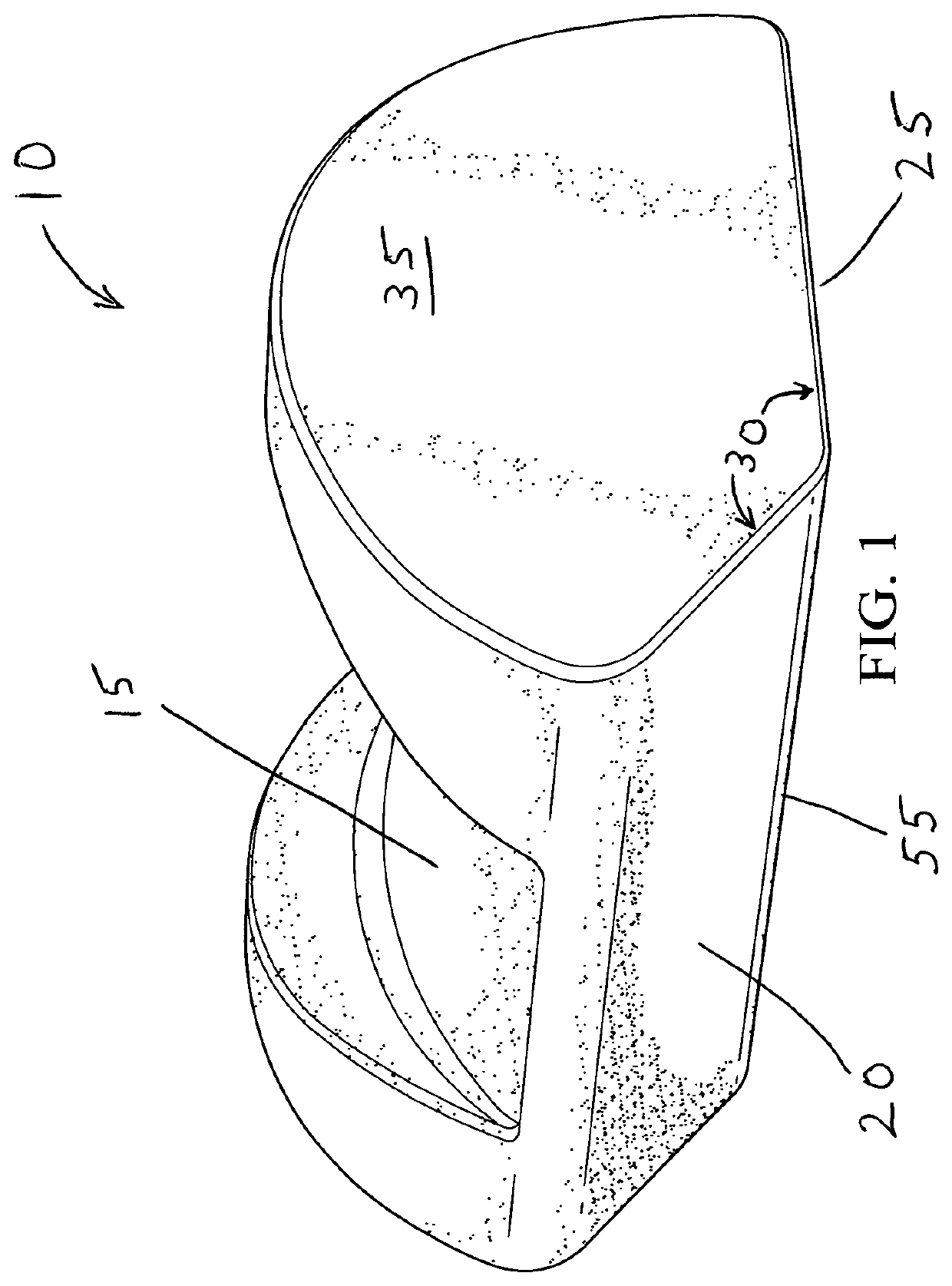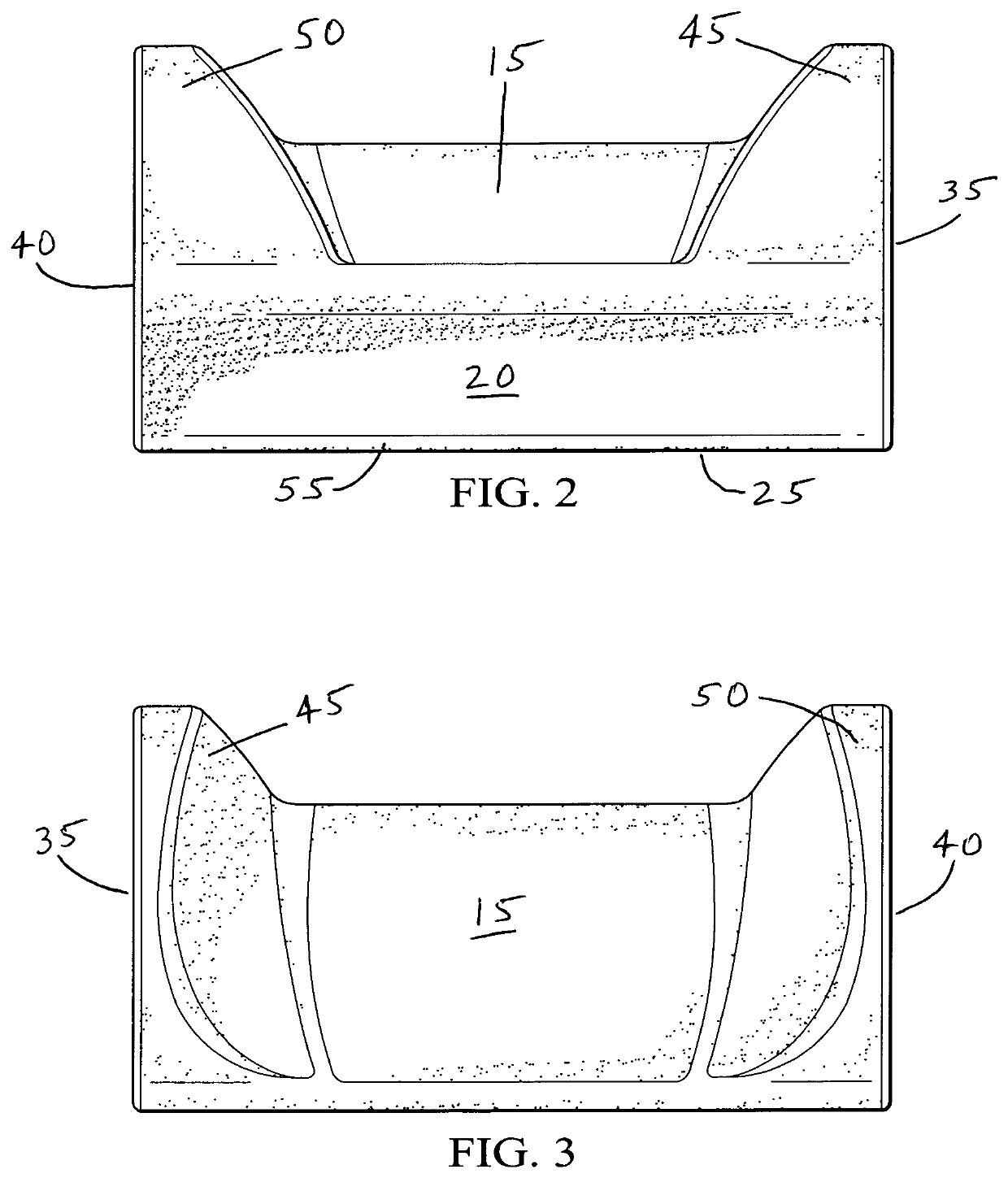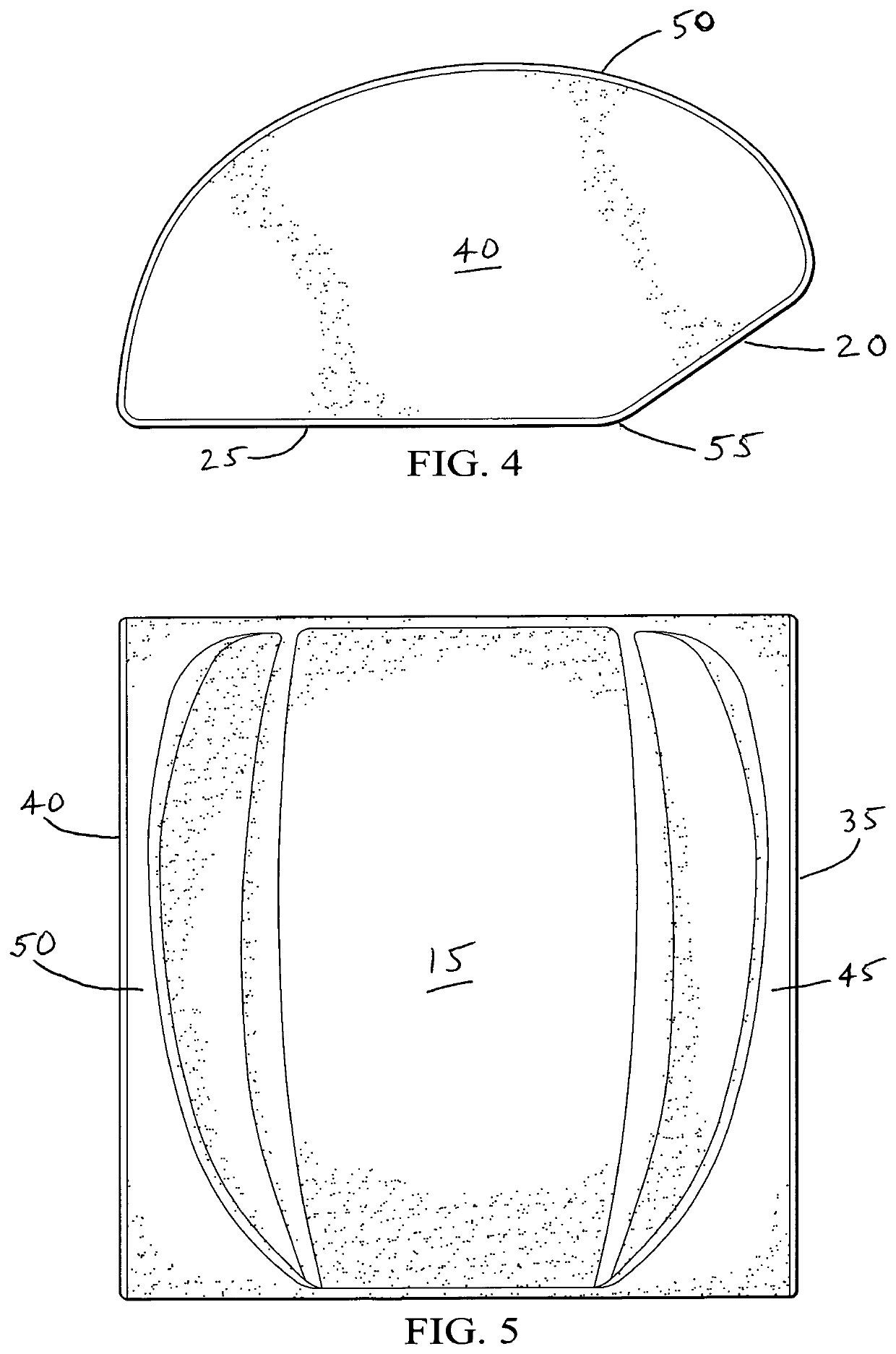Cushion for decompressing the human spinal column
a cushion and spinal column technology, applied in the field of new spinal decompression devices, can solve the problems of substantial body weight to stretch or decompress the person's spine or body, difficult swallowing, uncomfortable sensation, etc., and achieve the effect of relaxing, relaxing, and stretching or decompressing the spin
- Summary
- Abstract
- Description
- Claims
- Application Information
AI Technical Summary
Benefits of technology
Problems solved by technology
Method used
Image
Examples
first embodiment
[0033]this invention is shown in FIGS. 1 to 8. A cushion 10 has a body support surface 15, a first bottom surface 20, and a second bottom surface 25. The first bottom surface 20 and the second bottom surface 25 can both be relatively flat surfaces, which intersect at corner 55. The corner 55 could be the line of intersection of the two bottom surfaces or it could be slightly rounded as shown in FIG. 4. The first bottom surface 20 and the second bottom surface 25 are angled to one another at a predetermined angle 30. The predetermined angle can be a particular angle within the range from 120 degrees to 150 degrees, but is preferably an angle within the range of 130 to 140 degrees. A preferred angle between the first bottom surface 20 and the second bottom surface 25 is 135 degrees.
[0034]As seen in FIG. 2, the cushion 10 can have a side surface 35 on the right of the cushion 10 in this figure, and a side surface 40 on the left of the cushion 10 in this figure. In this preferred embodi...
second embodiment
[0045]this invention is illustrated in FIGS. 9-16. FIG. 9 shows a cushion 110 comprising a body support surface 115 on which a person can lie. The cushion 110 has a bottom surface 120, at least a portion of which is curved in one dimension.
[0046]The cushion 110 has a first side 135 and a second side 140. At the top of the cushion 110, there is a first bolster 145 that merges with the first side 135 of the cushion 110, and a second bolster 150 that merges with the second side 140 of the cushion 110. The body support surface 115 is disposed between the first bolster 145 and the second bolster 150 with the body support surface 115 lower than the surrounding bolsters as is seen in the figures.
[0047]The shape of the bottom surface 120 of the cushion 110 can be seen in FIG. 12 which shows one possible shape of the bottom surface. In this preferred embodiment, the bottom surface 120 of the cushion 110 can be a continuously curved two-dimensional curve along the entire bottom surface. The b...
PUM
 Login to View More
Login to View More Abstract
Description
Claims
Application Information
 Login to View More
Login to View More - R&D
- Intellectual Property
- Life Sciences
- Materials
- Tech Scout
- Unparalleled Data Quality
- Higher Quality Content
- 60% Fewer Hallucinations
Browse by: Latest US Patents, China's latest patents, Technical Efficacy Thesaurus, Application Domain, Technology Topic, Popular Technical Reports.
© 2025 PatSnap. All rights reserved.Legal|Privacy policy|Modern Slavery Act Transparency Statement|Sitemap|About US| Contact US: help@patsnap.com



